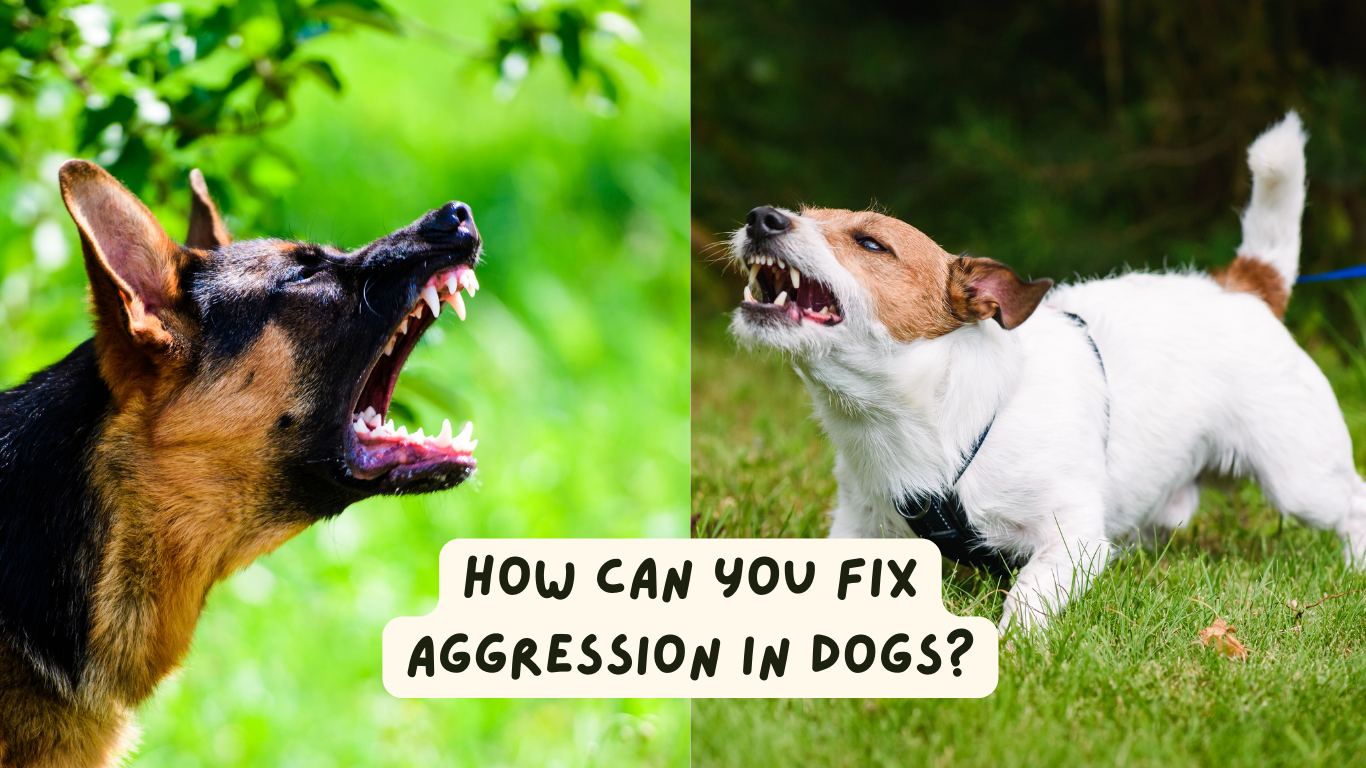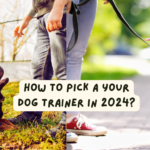There are many variables in answering this question, The type of Aggression In Dogs is one factor. The individual character and genetic stability of the nerve are yet another. To correct aggression, we need to define it, find out what kind of aggression it is, and where it comes from, evaluate the dog on a personal level, and try to eliminate a lot of problems, habits, misunderstandings, and more.
Types of aggression in dogs:-
Fear Aggression:
Fear aggression is by far the most common type of aggression when it comes to human aggression in dogs. Dogs who are fear-aggressive will often adopt body positions that signal fear when they withdraw, such as cowering, licking their lips, and baring their teeth.
Many people say that there was “no warning” before the bite, and the bite is often a quick bite and release or several quick bites because the dog simply wants to get away. The body posing I mentioned earlier “thousand-yard stare” from the side of their eye. Body stiffening etc.
Can fear aggression be cured or repaired? Unfortunately no, he can’t. A fearful dog that has never been forced to be aggressive to be left alone can be worked without problems. But once a dog has learned aggression and can get people to let it go, that lesson is never forgotten.
There are many things you can do to manage fear aggression, such as working to overcome their specific fears in a purely positive way. For example, if your dog is afraid of strangers, turn the strangers into treat machines. Let them pass and drop a valuable treat on the ground. Reduce the distance over time, etc. The purpose of this article is not so much to dive into troubleshooting, but rather to identify the problem and what can be done about it.
Territorial Aggression:
This one is easy to spot. Territorial aggression is usually the result of a stranger in the dog house or yard. This form of aggression is rooted in fear, but it is not fear aggression. A fear-aggressive dog without territorial aggression will not cross the yard to start a fight. He hides in a corner somewhere. Territorial aggression is a more active form of fear-based aggression.
Some people don’t mind this type of aggression as long as the dog learns to distinguish between a stranger who harbors ill will and a guest. And luckily, this form of aggression is usually correctable with positive interactions with guests. You can even use corrections to teach the dog territorial aggression that will not be allowed towards guests. This is something you can’t do with fear aggression because it will backfire by making the dog more afraid.
Idiopathic aggression:
Idiopathic just means “We have no idea what’s going on here.” If someone is familiar with aggression and cannot tell where the aggression is coming from, it is often neurological. Rage syndrome is a perfect example of idiopathic aggression.
Indeed, these dogs have no warning before the episode and often appear confused or as if they have no recollection of having just bitten someone, often their owner, immediately after the episode ends. This type of aggression cannot be corrected and this type of dog will always be unpredictable and dangerous.
If you don’t have kids, or will ever have them, and there are only adults here who are fully aware of the risk and don’t mind being bitten very hard by a very serious dog with a very serious psychological syndrome of some kind, you could probably keep the dog.
Or if the dog lived outside in an escape-proof pen, that’s fine. But for every other situation imaginable, it is best to beat a dog with this kind of aggression. They are loaded, unsecured weapons that automatically target random individuals and will continue to do so, and no training, medication, or therapy can fix or even alleviate this.
Fortunately, this is the rarest type of aggression. I’ve only seen it once and it’s unnerving. A happy, normal dog who would freeze up like he was having a silent seizure and randomly attack other dogs, random people, etc. He might even jump over the nearest person and go for someone else. This dog weighed only 40 pounds, but after several broken fingers, trips to the hospital, and severe dog fights, the family finally gave up and had him humanely euthanized.
Predatory aggression:
This is a fairly common form of aggression that is often seen in dogs when they hunt smaller animals such as rabbits, squirrels, and cats. In cases like these, proving your obedience will solve your problems.
Things take a left turn when this aggression is fixed on people. Predatory aggression is a very serious form. A dog tries to kill something to feed its prey. When a dog shows predatory aggression towards a human, you need professional help from a highly skilled trainer.
In most cases this can be solved by demonstrating obedience to your dog, serious cases where the dog perceives its owner as prey is a dangerous gray area. These are the dogs you read about in the newspaper that killed their owner. Tread carefully and with the help of a qualified professional.
As a side note, this is the aggression most commonly seen in dogs that work as police service dogs, military working dogs, and the like.
Dominance Aggression:
These are dogs that want to fight. They are not afraid, nor do they view their victim as prey. They see them as a partner in battle. This is a drive that can be seen in fighting breeds and can also be seen in some police service dogs, military working dogs, etc. They fight to win. The number one cause of death for adult wolves is killing by other wolves. This is part territorial aggression and part dominance aggression.
When different types of aggression bleed into each other, it complicates things because you’re trying to solve two problems with one training plan.
Dogs with dominant aggression can in most cases be controlled by firm obedience. But they cannot be fixed or cured. It’s genetic. It’s about who they are. What they were born to do. Fortunately, this is relatively rare and mostly occurs in working and fighting dogs. This desire to fight is also sometimes called social conflict aggression or combat aggression.
Resource Protection/Possession Aggression:
This is another very common form of aggression that can be quite serious. Simply when a dog uses violence to protect what he or she perceives as theirs. It is most often found with food, but it can also extend to toys and even a person’s attention.
This is a form of aggression that can be positively dealt with through obedience and training where you exchange something they have for something else. Another thing that helps is limiting outdoor toys and food. A dog cannot claim what is not around.
Read More…
How to Introduce Dogs to Each Other at Home













